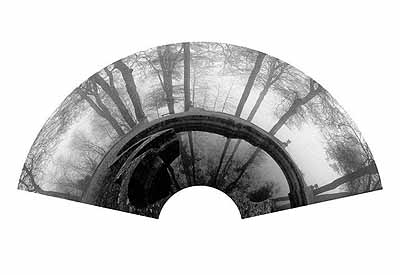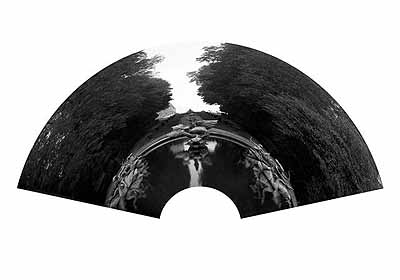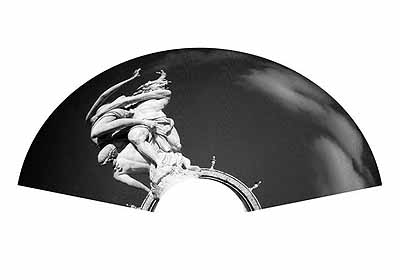
Joshua Borkovski »
Mirrors, the Garden/ Anamorphoses
Exhibition: 22 May – 27 Jun 2003
Noga Gallery of Contemporary Art
60 Ehad Ha’am st
65202 Tel Aviv
Noga Gallery of Contemporary Art
60 Ehad Ha'am St.
65202 Tel Aviv
+972 3 -5660123
nogaart@zahav.net.il
www.nogagallery.com
Mon-Thu 11-18 . Fri , Sat 11-14

In his new exhibition opening 22.5.03 Shuki Borkovsky exhibits works from the past two years: a series of photographs from the cycle of works Views, The Garden / Anamorphoses and paintings from the cycle of works Echo and Narcissus. In the cycle of works Views, The Garden / Anamorphoses the artist makes new and surprising use of the photographic medium in order to return and focus the attention on questions of vision and doubt. Questions central to his work during the past two decades. In his past works Borkovsky has made use of phantasmagoric images, images of shadows/silhouettes, images that represent the reflections of things and not the things themselves, their echo, shadow, or reflection in mirrors. (The silhouettes of sailing ships and the cartographic images from the early 1990s and later images of crystal chandeliers reflected in mirrors.) These paintings demanded the extended presence of the viewer and a concentrated observation that threw doubt on seeing and the truth of what was reflected. In the photographs shown in this exhibition, anamorphous photographs of gardens, the artist continues to deal with similar questions. The original photograph is manipulated and changed and the distortion unsettles the viewer's certainty of regarding the real thing it is representing. An additional distortion in the photograph utilizes the moir? effect that creates a "spiraling" and "whirlpool" effect in the image. (In standard, correct prints the moir? effect is considered a fault and mistake, while Borkovsky turns this distortion into a fundamental value within the image.) An enigmatic image-photograph is attained, which suspends the gaze and simultaneously presents throws doubt on vision, on photography as representation of the real thing and on the certainty of "correct" vision. "Truth" will be revealed, in a magical way, only by a correction of the mistake through its reflection in a curved mirror: in a paradoxical manner the "truth" is received as a reflection, as a likeness and illusion. The artist, the "seller of salt" again returns himself and the viewer to a place of doubt. The paintings in the exhibition, from the cycle Echo and Narcissus - diptychs (oil paint and gold leaf on canvas) - bring about an extreme form of abstraction, the concentration and reduction that characterizes Borkovsky's work. As the name makes clear, the whole cycle is encoded with figurative images. The most abstract place is also the most figurative. Narcissus reaches awareness only through his reflection and Echo is present in the world as a reverberation, a repetition. The viewer has a central role and position in the charging of the paintings in all the "paired" galleries throughout time and to this point in additional reflections. The viewer can be either Echo or Narcissus, or both at the same time. Anamorphosis: an image distorted is such a way that it is possible to see it in its true state from a specific point of view or through reflection in a curved mirror. When seen directly it is abstract an incomprehensible. The system of perspective creates not only rational relations within the painting but also builds relations between the viewer and the exhibited anamorphic images are an extreme example of the subjectivation of the process of seeing. At first the viewer is led astray by a barely recognizable image. The etymological root of the word comes from the Greek (morph, shape) takes into account that the viewer needs to be active and form the painting for himself. The image that appears as if by magic has attracted many artists, philosophers, and poets throughout time. Leonardo da Vinci, Durer, and Holbein (The Ambassadors) created anamorphic images. Jean Cocteau write of anamorphic images as a "no-man's land" where science and poets meet. Anamorphic images were seen as "wonders".

